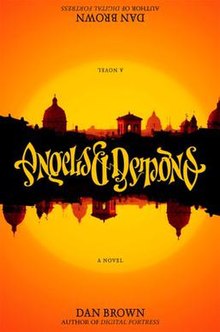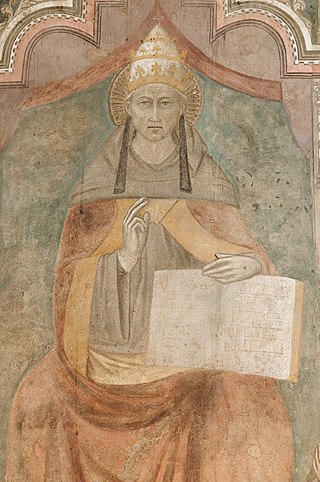
Pope Celestine V, born Pietro Angelerio, also known as Pietro da Morrone, Peter of Morrone, and Peter Celestine, was head of the Catholic Church and ruler of the Papal States for five months from 5 July to 13 December 1294, when he resigned. He was also a monk and hermit who founded the order of the Celestines as a branch of the Benedictine order.

Giuseppe Siri was an Italian cardinal of the Catholic Church who served as Archbishop of Genoa from 1946 to 1987, and was elevated to the rank of cardinal in 1953. A protege of Pope Pius XII, he was, at one point, considered a papabile.

The Camerlengo of the Holy Roman Church is an office of the papal household that administers the property and revenues of the Holy See. Formerly, his responsibilities included the fiscal administration of the Patrimony of Saint Peter. As regulated in the apostolic constitution Pastor bonus of 1988, the Camerlengo is always a cardinal, though this was not the case prior to the 15th century. His heraldic arms are ornamented with two keys – one gold, one silver – in saltire, surmounted by an ombrellino, a canopy or umbrella of alternating red and yellow stripes. These also form part of the coat of arms of the Holy See during a papal interregnum. The Camerlengo has been Kevin Farrell since his appointment by Pope Francis on 14 February 2019. The Vice Camerlengo has been Archbishop Ilson de Jesus Montanari since 1 May 2020.

An ambigram is a calligraphic composition of glyphs that can yield different meanings depending on the orientation of observation. Most ambigrams are visual palindromes that rely on some kind of symmetry, and they can often be interpreted as visual puns.

Daniel Gerhard Brown is an American author best known for his thriller novels, including the Robert Langdon novels Angels & Demons (2000), The Da Vinci Code (2003), The Lost Symbol (2009), Inferno (2013), and Origin (2017). His novels are treasure hunts that usually take place over a period of 24 hours. They feature recurring themes of cryptography, art, and conspiracy theories. His books have been translated into 57 languages and, as of 2012, have sold over 200 million copies. Three of them, Angels & Demons, The Da Vinci Code, and Inferno, have been adapted into films, while one of them, The Lost Symbol, was adapted into a television show.

Robert Langdon is a fictional character created by author Dan Brown for his Robert Langdon book series: Angels & Demons (2000), The Da Vinci Code (2003), The Lost Symbol (2009), Inferno (2013) and Origin (2017). He is a Harvard University professor of Religious Iconology and "symbology".
Malachi Brendan Martin, also known under the pseudonym of Michael Serafian, was an Irish-born American Traditionalist Catholic priest, biblical archaeologist, exorcist, palaeographer, professor, and prolific writer on the Roman Catholic Church.
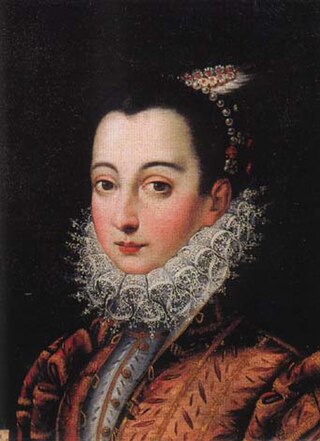
Vittoria Accoramboni, Duchess of Bracciano was an Italian noblewoman. Her life became the basis for John Webster's play The White Devil, several novels, and a novella by Stendhal.

A papal conclave was held on 18 and 19 April 2005 to elect a successor to John Paul II, who had died on 2 April 2005. Upon the pope's death, the cardinals of the Catholic Church who were in Rome met and set a date for the beginning of the conclave. Of the 117 eligible members of the College of Cardinals, those younger than 80 years of age at the time of the death of Pope John Paul II, all but two attended. After several days of private meetings attended by both cardinal electors and non-voting cardinals, the conclave began on 18 April 2005. It ended the following day after four ballots with the election of Cardinal Joseph Ratzinger, Dean of the College of Cardinals and Prefect of the Congregation for the Doctrine of the Faith. Ratzinger was the first member of the Roman Curia to become pope since Pius XII, elected in 1939. After accepting his election, he took the name Benedict XVI.

The papal conclave that followed the death of Pius VI on 29 August 1799 lasted from 30 November 1799 to 14 March 1800 and led to the selection of Cardinal Barnaba Chiaramonti, who took the name Pius VII. This conclave was held in Venice and was the last to take place outside Rome. This period was marked by uncertainty for the papacy and the Roman Catholic Church following the invasion of the Papal States and abduction of Pius VI under the French Directory.
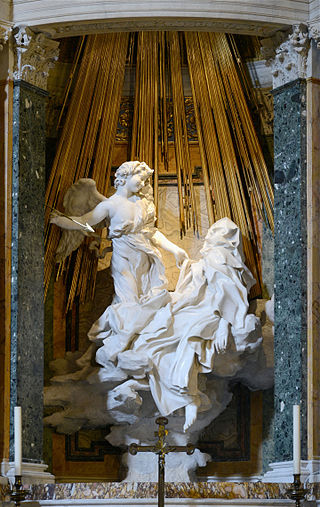
The Ecstasy of Saint Teresa is a sculptural altarpiece group in white marble set in an elevated aedicule in the Cornaro Chapel of the church of Santa Maria della Vittoria in Rome. It was designed and carved by Gian Lorenzo Bernini, the leading sculptor of his day, who also designed the setting of the chapel in marble, stucco and paint. The commission was completed in 1652.
Acclamation was formerly one of the methods of papal election.

Pope John Paul II is a 2005 television miniseries dramatizing the life of Pope John Paul II from his early adult years in Poland to his death at age 84.

Girolamo Riario was Lord of Imola and Forlì. He served as Captain General of the Church under his uncle Pope Sixtus IV. He was one of the organisers of the failed 1478 Pazzi conspiracy against the Medici family, the rulers of Florence, and was assassinated 10 years later by members of the Forlivese Orsi family.

Founded by Adam Weishaupt in Bavaria in 1776, the Illuminati have been referred to in popular culture, in books and comics, television and films, and games. A number of novelists, playwrights and composers are alleged to have been Illuminati members and to have reflected this in their work. Early conspiracy theories surrounding the Illuminati have inspired various creative works, and continue to do so.

Angels & Demons is a 2009 American mystery thriller film directed by Ron Howard and written by Akiva Goldsman and David Koepp, based on Dan Brown's 2000 novel of the same title. It is the sequel to the 2006 film The Da Vinci Code, also directed by Howard, and the second installment in the Robert Langdon film series. However, the novel version was published before The Da Vinci Code novel. Filming took place in Rome, Italy, and the Sony Pictures Studios in Culver City, California. Tom Hanks reprises his role as Professor Robert Langdon, while Ayelet Zurer stars as Dr. Vittoria Vetra, a CERN scientist joining Langdon in the quest to recover a missing vial of antimatter from a mysterious Illuminati terrorist. Producer Brian Grazer, composer Hans Zimmer and screenwriter Akiva Goldsman also return, with David Koepp coming on board to help the latter.
John Langdon is an American graphic designer, ambigram artist, painter, and writer. Langdon has been a freelance artist specializing in logos, type, and lettering since 1977. He retired from teaching in Drexel University's graphic design program in November 2015 after 27 years of service.
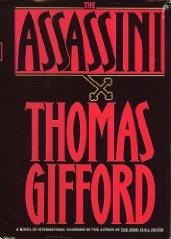
The Assassini is a 1990 thriller novel by American author Thomas Gifford, published by Bantam Books.

Velasio de Paolis, C.S., JCD, STL, was an Italian member of the Missionaries of St. Charles Borromeo (Scalabrinians) and a cardinal of the Catholic Church. He was President of the Prefecture for the Economic Affairs of the Holy See and Pontifical Delegate for the religious institute of the Legionaries of Christ.

We Have a Pope is a 2011 Italian-French comedy-drama film directed by Nanni Moretti and starring Michel Piccoli and Moretti. Its original title is Latin for "We have a pope", the phrase used upon the announcement of a new pope. The story revolves around a cardinal who, against his wishes, is elected pope. A psychoanalyst is called in to help the pope overcome his panic. The film premiered in Italy in April 2011 and played in competition at the 64th Cannes Film Festival.
